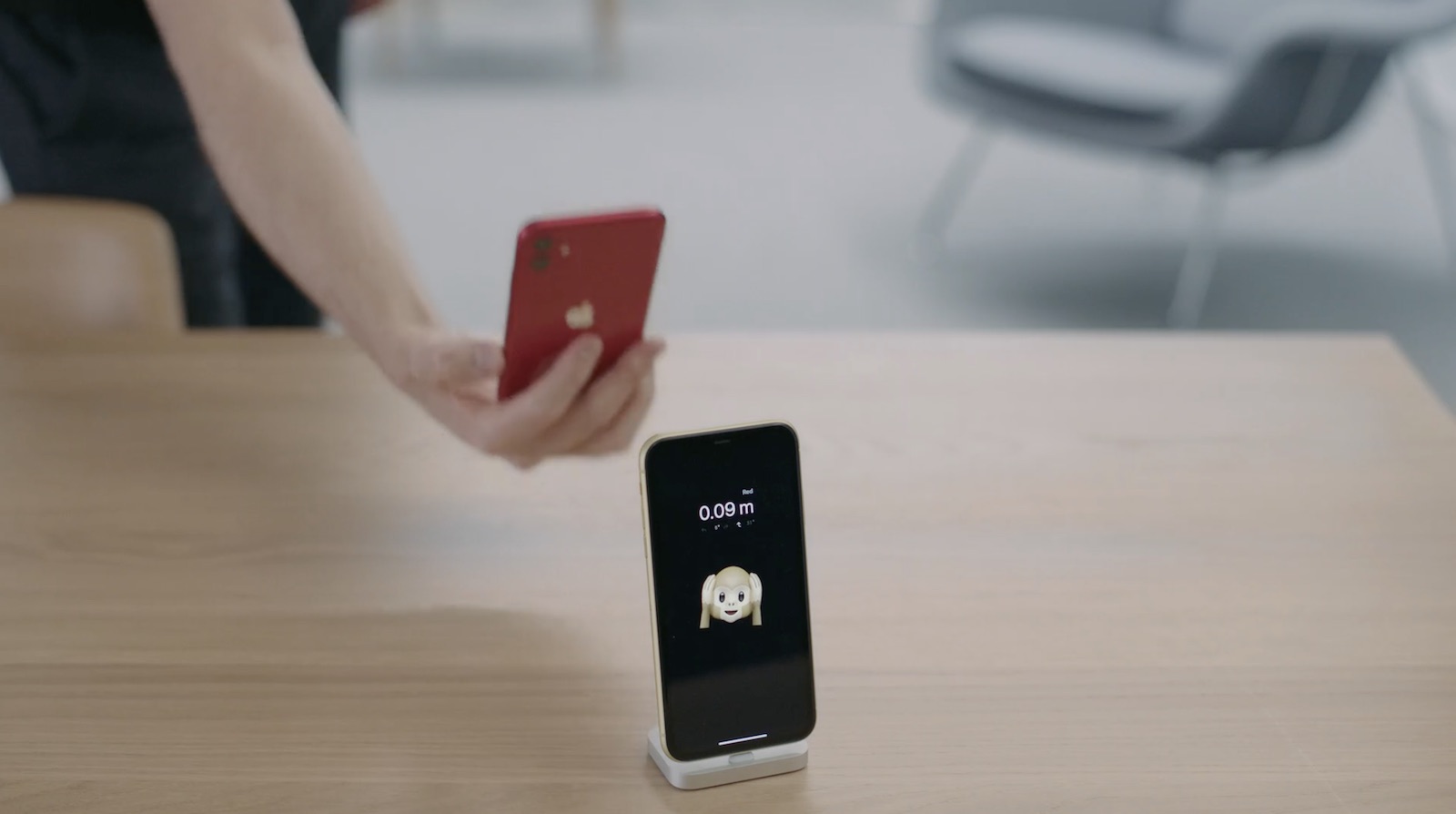
Introduced last year, the U1 chip in iPhone 11 models enables Ultra Wideband support for improved spatial awareness, but Apple has so far only used the technology to power a directional AirDrop feature in iOS 13.

In the upcoming months, that should change, as Apple has announced that it is opening up its U1 chip to developers with a new "Nearby Interaction" framework for iOS 14. This framework can stream distance and relative direction between U1-equipped devices, paving the way for some interesting new spatial-related user experiences.
Apple provides some examples:
- A multiuser AR experience places virtual water balloons in the hands of its participants
- A taxi or rideshare app employs a peer user's direction in real time to identify the relative locations of a driver and a customer
- A game app enables a user to control a paddle with their device and respond to a moving ball on the peer user's screen
In its video overview of the framework, Apple noted that both iPhones should be in portrait orientation to ensure accurate measurement of distance and direction. If one iPhone is in portrait orientation and the other is in landscape, this could limit the measurement capabilities, as can walls, people, pets, objects, and other obstacles between the devices.
Apple has added "Nearby Interaction" support to its Simulator tool within Xcode 12 so that developers can experiment with the framework.
Article Link: Apple Opening U1 Chip to Developers With New 'Nearby Interaction' Framework

